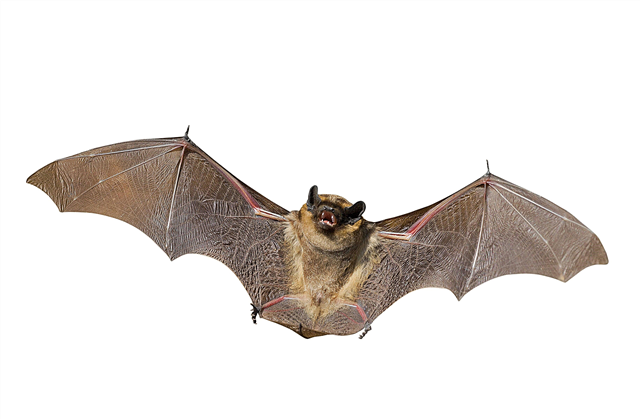
The existence of ball lightning - a holy electric ball hovering above the earth - has troubled scientists for centuries, creating around itself a huge layer of myths and legends. This mystical natural phenomenon, which can also be called “earth lightning,” usually appears during a thunderstorm in the form of a sphere drifting above the ground - the color scheme of these objects varies from orange to yellow. The phenomenon, as a rule, does not last long - only a couple of seconds, but is accompanied by a hiss and a pungent odor.
Lightning, as such, is an electrical discharge caused by a positive and negative imbalance within the clouds themselves or between thunderclouds and the earth. A lightning flash can heat the air around it to a temperature five times higher than the sun. The high temperature causes the surrounding air to expand and vibrate quickly, and thunder also appears from here.
What is ball lightning?
Ball lightning is a luminous spherical bunch of electric current. Even if it exists, and some scientists doubt it, it is very rare. However, many amazing stories are known about the tricks of ball lightning.
What does ball lightning look like?

Descriptions of ball lightning are very different from each other, so it is not possible to accurately answer the question posed. So, some eyewitnesses described them moving up and down, others - to the side, others - along an unpredictable trajectory, fourth - were in a static position, fifth - against the wind. There were also statements that ball lightning could repel people, cars or buildings without any influence; others claim that this phenomenon, on the contrary, is attracted by surrounding objects.
Some eyewitnesses claim that ball lightning can pass through solid objects - metals, trees without any effect; others say that when they come in contact with a “fireball”, the substances explode, melt, or are otherwise destroyed. There was evidence of lightning near power lines, at different heights, during thunderstorms and in calm weather.
Eyewitnesses gave the phenomenon many different types - transparent, translucent, multi-colored, evenly lit, radiating flames, threads or sparks; and its forms vary no less - spheres, ovals, drops, rods or discs. Some often confuse ball lightning with the Lights of St. Elmo, but you need to understand that these are two different natural phenomena.

It was reported that the balls disappeared in various ways - they evaporated, disappeared sharply, gradually dispersed, absorbed by nearby objects, popped, exploded loudly or even caused damage to everything around. The danger to people is also very different from witness to witness - some speak of complete harmlessness, others scare mortal danger.
In 1972, an attempt was made to analyze all available information about ball lightning and create the most faithful image of this mystery of nature. It turned out that the fiery sphere has the following properties:
- appears almost simultaneously with a lightning discharge;
- usually has a spherical or pear-shaped shape;
- diameter varies from 1 to 100 cm;
- brightness is about the same as that of a regular table lamp;
- there is a wide range of possible colors, the most common are red, orange and yellow;
- duration of “life” from 1 second to a whole minute. Brightness is maintained throughout the entire phenomenon;
- usually moves, but mostly horizontally at a speed of several meters per second.
- sometimes they can move vertically or just stand still;
- can make rotational movements;
- some witnesses reported a sensation of heat while in the vicinity with lightning;
- strive for metals;
- may appear in buildings, passing through doors and windows;
- some appeared in metal planes without causing any damage;
- disappearance can occur both with an explosion and in the form of silent evaporation;
Odor, sulfur, or nitric oxide are often reported.
Types of Ball Lightning
Based on eyewitness accounts, two types of ball lightning are distinguished. The first is a red lightning descending from the cloud. When such a heavenly gift touches any object on the earth, such as a tree, it explodes.
Interesting: ball lightning can be the size of a soccer ball; it can hiss and buzz menacingly.
Another type of ball lightning travels a long time along the earth's surface and glows with bright white light. The ball is attracted to good conductors of electricity and can touch anything - the earth, power lines or people.

Eyewitness accounts
The observations of ball lightning go far into the wilds of human history. A lot of eyewitness accounts were recorded that observed such a rare and amazing natural phenomenon. But even despite the large number of eyewitness accounts, up to 2010, the theory of the existence of ball lightning was a big question.
And while the scientific world is in ignorance and controversy, offering as many as 400 different theories, you can make your own conclusion about the reality of ball lightning by reading the history of recorded evidence of eyewitnesses to this mystery of nature.
Thunderstorm in Widecom in the Moore
One of the earliest testimonies speaks of the “Great Thunderstorm” that occurred at the Widecom-in-the-Moore Church in Devon, England, on October 21, 1638. During a severe storm, a huge luminous ball flew into the church premises, almost completely destroying it. Stone elements and huge wooden beams were thrown back many meters in different directions. Eyewitnesses claimed that lightning destroyed everything in its path - benches and glass - it filled the whole church with a sulfuric smell and dark thick smoke.

The victims said that the mysterious ball at one point was divided into two parts - one of them went out the window, breaking it, and the other evaporated in the church itself.
Eyewitnesses - due to the smell of sulfur and the destructive power of the phenomenon - agreed that it was the devil himself, who brought God's wrath to people. It was believed that two parishioners were to blame for everything, who decided to play cards during the sermon.
Ebenezer Cobham Brewer
Ebenezer Kobham Brewer, an English writer, in 1864, in his book, A Guide to the Scientific Knowledge of Things, discusses ball lightning. There he describes this phenomenon as slowly moving balls of fire and gas, which can fall to the ground or move quickly on it during a thunderstorm. The writer talked about how balls can explode “like a cannon”.

Wilfried de Fonviel
In his book Thunder and Lightning, the French writer Wilfried de Fonviel argues that more than 150 reports of ball lightning have been recorded.

These are probably the most famous cases in history, but there were many others.
On April 30, 1877, ball lightning flew into the Golden Temple in Amritsar, India, and flew out through the side door. Several people witnessed this phenomenon, and the incident was recorded on the front wall of Darshani Deodhi;
Pilots in the Second World War described an unusual phenomenon, for which a version of ball lightning was proposed as an explanation. They saw small balls of light moving along strange trajectories, which they began to call foo fighters.
In 2005, there was a case in the sky over Guernsey when lightning struck the plane. Witnesses to this event claimed to have seen ball lightning.
December 15, 2014 during a flight BE-6780 in the UK, passengers observed ball lightning in the front of the cabin shortly before lightning hit the plane.
How is ball lightning formed?
Visual hallucination
In 2010, scientists from the Austrian University of Innsbruck published their hypothesis, which first fell under Popper's criteria (that is, this is the first hypothesis that can be considered scientific). Experts considered that the phenomenon of ball lightning is not a natural anomaly, but only phosphene (that is, a visual hallucination that occurs without direct exposure to light on the eye receptors, causing the observed images of luminous dots and figures that appear in the dark).
Pir and Kendel suggest that the changing environmental conditions arising from lightning strikes affect the optic nerves of people in such a way that they think they see ball lightning. A similar effect can be caused even at a distance of 100 meters from the direct point of lightning strike.
For two years this theory was considered the main one, and it seemed to the scientific world that the issue was resolved, but in 2012, something happened in the Tibetan plateau region that returned ball lightning to the agenda. Chinese meteorologists who installed spectrometers to observe conventional lightning, were able to capture the glow of ball lightning. It lasted exactly 1.64 seconds, and specialists were able to register its detailed spectra. They are very different from ordinary lightning, in which there are lines of ionized nitrogen, while ball lightning had iron, silicon and calcium contained in the soil.
Thus, we can conclude that the hypothesis of Austrian scientists is not exhaustive. But there is still no conclusive theory about why such an anomaly occurs. AND many experts generally doubt its existence.
Chemical reaction
Chinese meteorologists from Lanzhou, who recorded ball lightning in 2012, published their hypothesis of the occurrence of ball lightning. So they suggested that the anomaly occurs due to certain chemical reactions between oxygen and elements that evaporate from the soil when struck by lightning. This ionized air, or plasma, can also cause another effect, called St. Elmo's Lights (they are a stationary glow that often occurs at the ends of ship masts. It is sometimes confused with ball lightning).
But this was not the only theory that was published in 2012. At the same time, another assumption was made, according to which glass could become a source of ball lightning. Thus, experts suggest that ions from the atmosphere can accumulate on the surface of the glass, and if their concentration is sufficient, a discharge is generated, which becomes ball lightning. Four years after these two studies, an article appeared that reported that microwave radiation resulting from a lightning strike can be “encapsulated” in a certain sphere from the plasma — this is ball lightning.
Other scientists speculate around earthquakes. They claim that in areas where an earthquake occurs, there may be similarities to ball lightning, which may look different - bluish balls of flame flying at about ankle level, or sharp bright flashes of light that can be confused with lightning from the ground, and not from clouds, and floating balls can also arise.
This happens - according to a study published by seismologists in 2014 - due to the fact that some rocks can generate electricity under certain reactions, so when a seismic wave travels through this area, it can cause similar reactions.
Microwave rays
But scientists tried not only to analyze the evidence that came from the past, but also in the laboratory tried to recreate this mysterious phenomenon. So Israeli specialists from the University of Tel Aviv were able to call their version of ball lightning using microwave beams. In a very recent experiment, conducted in 2018, quantum physicists decided to create ball lightning using a synthetically coupled magnetic field.
But this is not all theories of the appearance of ball lightning, but only the most recent of them. Scientists continue to puzzle over such an elusive phenomenon, which is not a fact that even exists.
Laboratory experiments
Scientists have long tried to recreate ball lightning in the laboratory. Although some experiments produced effects that were visually similar to evidence of natural ball lightning, it was not yet confirmed whether there was any connection between them.
According to reports, Nikola Tesla could artificially create small luminous balls with a diameter of 30-40 mm, and also conducted some demonstrations of his skills. But this was only a hobby for the great scientist, so he did not leave any notes or explanations. He was more interested in higher voltages and powers, as well as remote transmission of energy, so the balls he made were just a manifestation of curiosity.
The International Committee for Ball Lightning (ICBL) held regular symposia on this topic. The group uses the generic name "Unconventional Plasma". The last ICBL symposium was tentatively scheduled for July 2012 in San Marcos, Texas, but was canceled due to a lack of abstracts.
Guided microwaves
W.H. Otsuki and H. Ofuruton described an experiment to create “plasma fireballs” using microwave noise in an air-filled cylindrical tank fed by a rectangular waveguide using a 2.45 GHz, 5 kW microwave generator (maximum power).
Water experiments
Some scientific groups, including the Max Planck Institute, have reportedly produced an effect resembling ball lightning by dropping a high voltage capacitor into a water tank.
Microwave Home Experiments
You can create luminous balls, often called plasma balls, by placing in a microwave oven a freshly faded match or other burnt small object. The scorched portion will begin to flash in the form of a large fireball, and “plasma balls” will begin to appear at the ceiling of the furnace chamber.
Some experimenters recommend covering objects so as not to damage the microwave. However, a glass jar, for example, ultimately explodes, and does not just cause carbonization of the paint or melting of the metal, as happens inside a microwave oven. Therefore, repeat such experiments at home is not worth it!
Silicon experiments
In 2007, scientists decided to try using electric plates that can evaporate silicon and cause oxidation in vapors. The visual effect can be described as small luminous, sparkling balls that rotate around the surface. These experiments were based on the theory that ball lightning is actually oxidized silicon vapor.
Difficulties in studying ball lightning
Scientists know little about ball lightningbecause they are very difficult to study. Firstly, one must guess where the lightning will appear, and this is almost impossible. Then you need to shoot a luminous ball on film or on a video cassette, and this is very difficult, because before you can press the button on the camcorder, the luminous phenomenon will already disappear.
So the only thing scientists are based on in their reasoning is the stories of people who were eyewitnesses of this phenomenon. There is little objective evidence of the reality of ball lightning, therefore many scientists doubt the very fact of its existence. And those who do not doubt find it difficult to explain its nature. The main question is why ball lightning has been around for so long. A flash of ordinary lightning continues an elusive moment, it occurs at the moment when negatively charged particles of the cloud meet with positively charged particles rising from the ground.
Interesting: ball lightning - a small copy of a thundercloud that occurs when a flash of ordinary lightning.
Ball Lightning Lifetime
Ball lightning exists from a few seconds to several minutes. How is this done? One theory claims that the ball is a small copy of a thundercloud. Here's how this might happen. The smallest specks of dust are constantly in the air. Lightning can tell an electric charge to dust particles in a certain section of air. Some dust particles charge positively, others negatively. In a further light representation lasting up to many seconds, millions of small lightnings connect oppositely charged dust particles, creating an image of a sparkling fireball in the air.
How to behave when meeting with ball lightning?
No specific advice on protecting yourself from ball lightning can be given due to the fact that the phenomenon is poorly understood and does not have any specific characteristics and patterns. But if we make the assumption that ball lightning is just an unusual form of a typical lightning, then the protection should be the same as during a thunderstorm.
Although the likelihood of lightning striking a person is approximately 1 in 1,000,000, some factors may still slightly reduce this ratio. Therefore, it is worth knowing them to avoid. Most often, lightning strikes people working or resting on the street. The consequences of lightning strikes are serious. Lightning is one of the main causes of weather-related deaths.
You can protect yourself from risks even when you are on the street:
- If the weather forecast warns of a thunderstorm, it is better to postpone the trip;
- If you heard the peals of thunder - go into the room;
- Do not forget about the 30-30 rule: when the thunder sounded, start to count, if the next peal occurs before you have time to count to 30, then do not leave the room for 30 minutes;
- If there are no rooms nearby, then sit down as low as possible so that the smallest possible area of the body is in contact with the ground;
- Stay away from trees, concrete roads or walls.
The room is also worth being careful, since 1/3 of injuries caused by a lightning strike occurs in the building:
- Avoid water during thunderstorms - discharge may pass through pipes;
- Avoid any electrical equipment;
- Avoid using phones;
- Avoid concrete surfaces.
Although the likelihood that lightning strikes you is incredibly small, you should still try to minimize the risks. Take care of your health!












